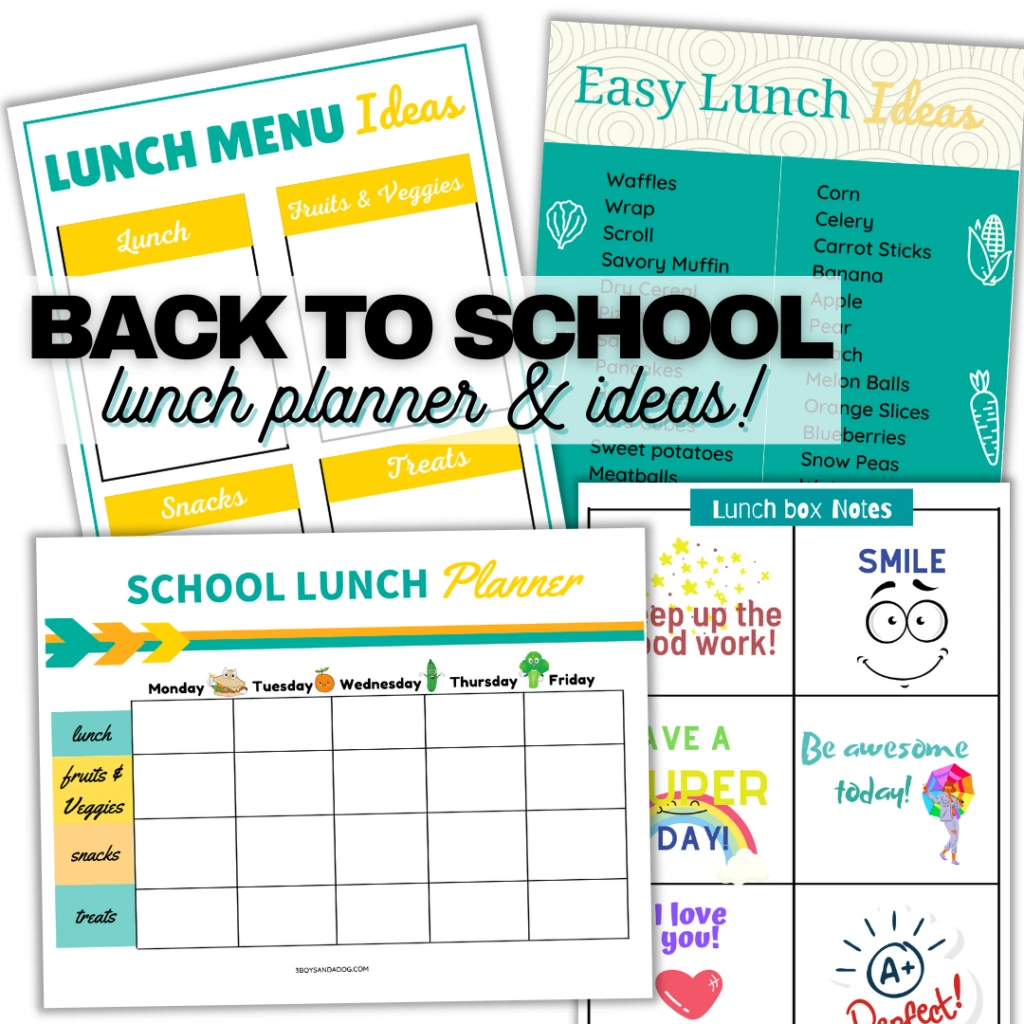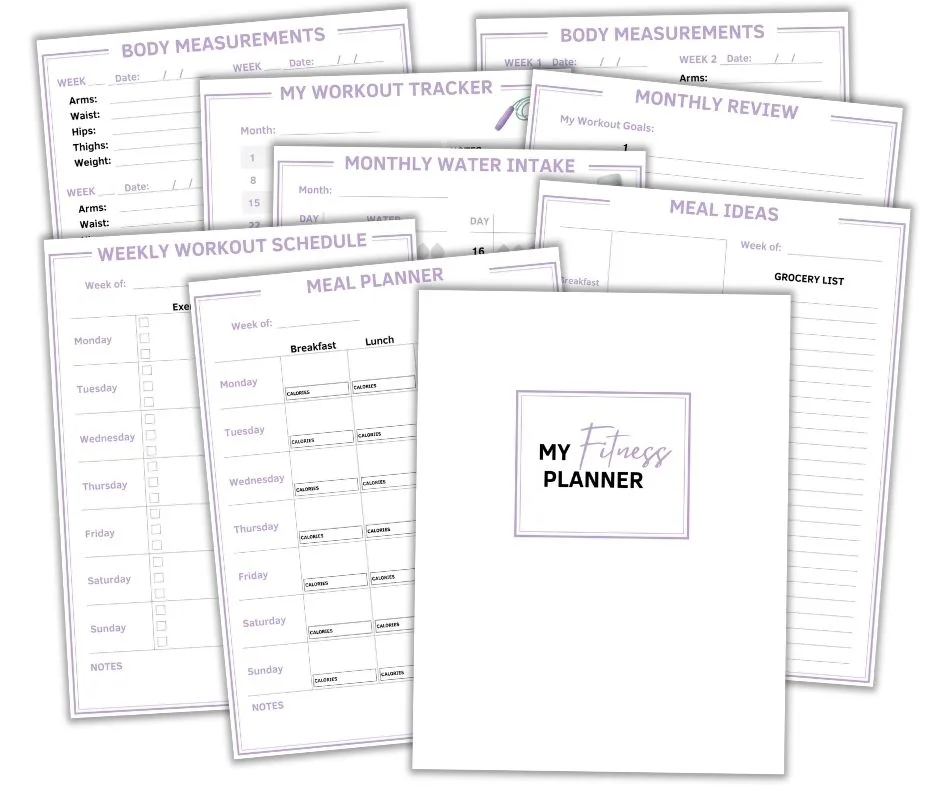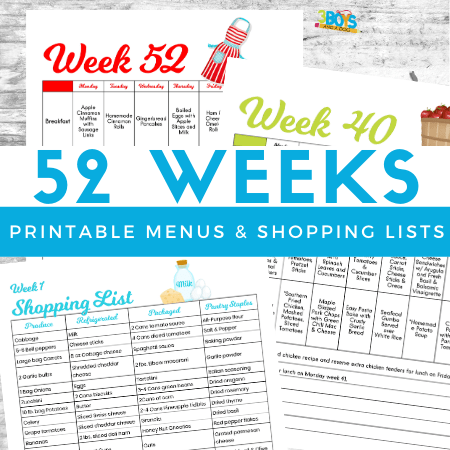Simplicity is often the key to success when it comes to meal planning. A simple menu for the week can help you save time and money while still providing delicious and nutritious meals for the family.
Meal planning is a vital tool for ensuring a stress-free week ahead. Planning your meals can save time, reduce decision fatigue, eat healthier, and reduce food waste.

A structured weekly menu promotes healthier eating habits and adds excitement to meals through themed days!
Meal Planning with Themes
For a simple menu anyone can follow, consider designating specific themes for each day of the week.
Use this example for simple themes for meals:
- Meatless Monday: Opt for vegetarian or plant-based meals.
- Taco Tuesday: Enjoy a variety of tacos with different fillings.
- Pasta Wednesday: Explore pasta dishes like spaghetti, fettuccine, or penne.
- Throwback Thursday: Revisit a favorite recipe from the past.
- Fish Friday: Add seafood like salmon, tuna, or shrimp.
- Slow Cooker Saturday: Prepare a meal using a slow cooker for convenience.
- Soup and Salad Sunday: Wind down the week with a comforting soup and hearty salad.
These themed days can excite your meals while simplifying the planning process. Happy meal planning!
The Basics of Meal Planning
Meal planning involves organizing your meals in advance, considering your schedule, dietary needs, and budget. These are the fundamental principles of meal planning:
- Assess Your Schedule: Consider your weekly commitments and activities to determine how much time you have available for meal preparation. This will help you decide on quick and easy meals for busy days and more elaborate dishes for days when you have more time.
- Evaluate Dietary Needs: When planning meals, consider dietary restrictions, preferences, or health goals. This ensures that you include a variety of nutrients and cater to individual requirements within your household.
- Set a Budget: Determine how much you can allocate for groceries weekly. Planning meals around affordable ingredients and using leftovers efficiently can help you stick to your budget without compromising nutrition.
What are the benefits of meal planning?
The benefits of planning meals ahead of time are numerous:
- Save Time: Knowing what you’ll be cooking in advance can streamline your grocery shopping and meal preparation process, saving valuable time during the week.
- Save Money: Meal planning enables you to buy ingredients in bulk, take advantage of sales, and reduce the temptation of eating out, resulting in significant cost savings over time.
- Reduce Food Waste: Planning your meals helps you buy only what you need, use up ingredients before they spoil, and repurpose leftovers creatively, minimizing food waste.
- Eat Healthier: With a planned menu, you’re more likely to make nutritious choices, incorporate a variety of food groups, and avoid last-minute unhealthy options.
By embracing meal planning, you can simplify your weekly routine, promote a healthier lifestyle, and contribute to a more sustainable approach to food consumption.
Simple Menu for the Week
If you’re a visual person like me, having a list of recipes is helpful. Here are a few of my favorite breakfast, lunch, and dinner recipes to make meal planning a breeze.
Easy Breakfast Recipes:
- Dinosaur Breakfast Ideas
- Sweet Potato Breakfast Hash Recipe
- Potato Sausage Breakfast Casserole Recipe
- Papaya Breakfast Bowl Recipe
- Easy Parmesan Breakfast Potatoes Recipe
- Strawberry Banana Granola Parfaits Recipe
- Refreshing Berry Smoothies Recipe
Simple Lunch Recipes:
- Fun Halloween Bento Box Idea
- Ultimate Grilled Macaroni and Cheese Sandwich
- Waffle sandwich bento lunch
- Ham Salad Sandwich
- Blue Cheese and Turkey Club Sandwich
- Toasted Santa Fe Turkey Sandwich
- Grilled Salmon Sandwiches with Creamy Avocado
Delicious Dinner Recipes:
- Cajun Chicken & Rice Soup Recipe
- Skinny Chicken Broccoli Soup Recipe
- One-Pot Roasted Pork Supper
- Instant Pot Ham and Cheese Mac
- Low Calorie Fish Recipes
- Tender Instant Pot Tilapia Lime Tacos
- Bento Box Waffle Tacos Recipe
Having variety in what to make is great as I love having options!
Efficient Grocery Shopping Tips
It is important to create a shopping list that aligns with your weekly meal plan to ensure efficient grocery shopping. Here are some strategies to help you craft a shopping list that complements your menu:
- Match Items to Menu: Review each recipe on your weekly menu and list all the ingredients needed. Ensure you have quantities for each item based on the required servings.
- Check Pantry Staples: Take inventory of your pantry, refrigerator, and freezer to avoid purchasing items you already have. Cross off any ingredients you already possess from your list.
- Group Similar Items: To make shopping more efficient, organize your list by category (e.g., produce, dairy, proteins). Grouping similar items helps you navigate the store faster.
- Consider Store Layout: Arrange your list in the order of the store layout. Start with non-perishable items, then move on to produce, refrigerated goods, and frozen items. This sequence can help you avoid backtracking.
- Include Quantities: Specify quantities next to each item to prevent overbuying or underbuying. This ensures you purchase the right amount for your planned meals.
- Add Extras: Don’t forget to include any household essentials or snacks that aren’t part of your meal plan but are needed for the week.
Creating a well-organized grocery list can make your shopping experience more efficient and save time at the store. It is always a good idea to prepare a list before heading to the store!

Meal Prep and Storage
Meal prepping at the beginning of the week is a fantastic time-saving strategy for busy days ahead. Here are some tips to help you effectively meal prep and store your meals for freshness:
Meal Prepping Tips:
- Plan Your Meals: Consider your weekly schedule and preferences when deciding which meals to prepare in advance. Choose recipes that store well and can be easily reheated.
- Batch Cooking: Cook large portions of staple ingredients (such as grains, proteins, and vegetables) that can be used in multiple dishes throughout the week. This will reduce cooking time on busy days.
- Use Meal Prep Containers: Invest in high-quality containers that are airtight, microwave-safe, and freezer-friendly. Use these to portion your meals for easy grab-and-go options.
- Label and Date: It’s important to label each container with the dish’s name and the date it was prepared. This will help you keep track of freshness and consume meals within the safe timeframe.
- Include Snacks and Extras: Prepare snacks, salads, or smoothie packs in advance to have healthy options readily available when hunger strikes.
Storing Prepared Meals:
- Refrigeration: Store prepared meals in the refrigerator if you plan to consume them within a few days. Ensure they are cooled to room temperature before refrigerating to prevent condensation and spoilage.
- Freezing: For extended storage, freeze meals in airtight containers or freezer bags. Properly freezing meals can maintain their flavor and texture for several weeks.
- Layering: When storing meals with multiple components, consider layering ingredients such as sauces at the bottom, followed by proteins and grains to prevent sogginess.
- Thawing: If freezing meals, thaw them overnight in the refrigerator before reheating. This ensures even heating and better taste.
- Reheating: When reheating meals, use the microwave or stovetop to retain the texture and flavor. Add a splash of water or broth to prevent drying out.
By incorporating this meal-prepping and storing best practices into your routine, you can save time during the week while enjoying delicious, homemade meals that maintain freshness and quality. Happy meal prepping!
Shop My Printables
These printables are great for meal planning and organizing! Simply click the image to check out my shop products!



Planning a weekly menu can have several advantages: convenience, time-saving, cost-effectiveness, healthier food choices, and variety. You can reduce decision-making, simplify meal planning and preparation, and save time that would otherwise be spent figuring out what to cook daily.
By embracing a simple weekly menu, you can enjoy these advantages while promoting a stress-free and organized approach to your daily meals.









![Freshware Meal Prep Containers [21 Pack] 3 Compartment with Lids, Food Storage Containers, Bento Box, BPA Free, Stackable, Microwave/Dishwasher/Freezer Safe (24 oz)](https://m.media-amazon.com/images/I/51behMhFntL._SL500_.jpg)





Kelli
Tuesday 11th of October 2011
I am so excited to see how they are. My kids like iCarly and always want "Spencer's Famous Spaghetti Tacos" so it is neat to finally try them.
Carrie @ My Favorite Finds
Monday 10th of October 2011
So I don't get in a rut, I try to plan at least 2 new recipes a week. Then, we add them to the "keeper" list. Actually, as I'm coming up on the one year anniversary of my blog, I noticed that I will have 52 weeks of unique menus planned. I'm pretty excited about that!
Kelli
Tuesday 11th of October 2011
Carrie, I never thought of that! I am on my 3rd year and have menu planned almost since the beginning. Hmmm.... maybe I should just start over? LOL!
Michelle
Monday 10th of October 2011
Hi! Stopping by via MPM. Trying new things is always fun! I have never heard of Girl Scout Stew before. I may have to try that myself sometime. Have a great week!
Kelli
Tuesday 11th of October 2011
That is my family recipe. It is almost Spaghetti. ;-)
Sara
Monday 10th of October 2011
It is easy to get into a menu plan rut! I was feeling the same way, so this week I'm trying four new recipes-hopefully at least some of them will be hits! Found you via orgjunkie link up :)
Kelli
Tuesday 11th of October 2011
I used to sit down at my table with all my supplies and make my plan, then shop, etc. I have been so busy that I have cut that out. SO, I sit at my computer on Monday morning trying to crank out ideas and it just doesn't work well. I really need to get back to my real menu planning!